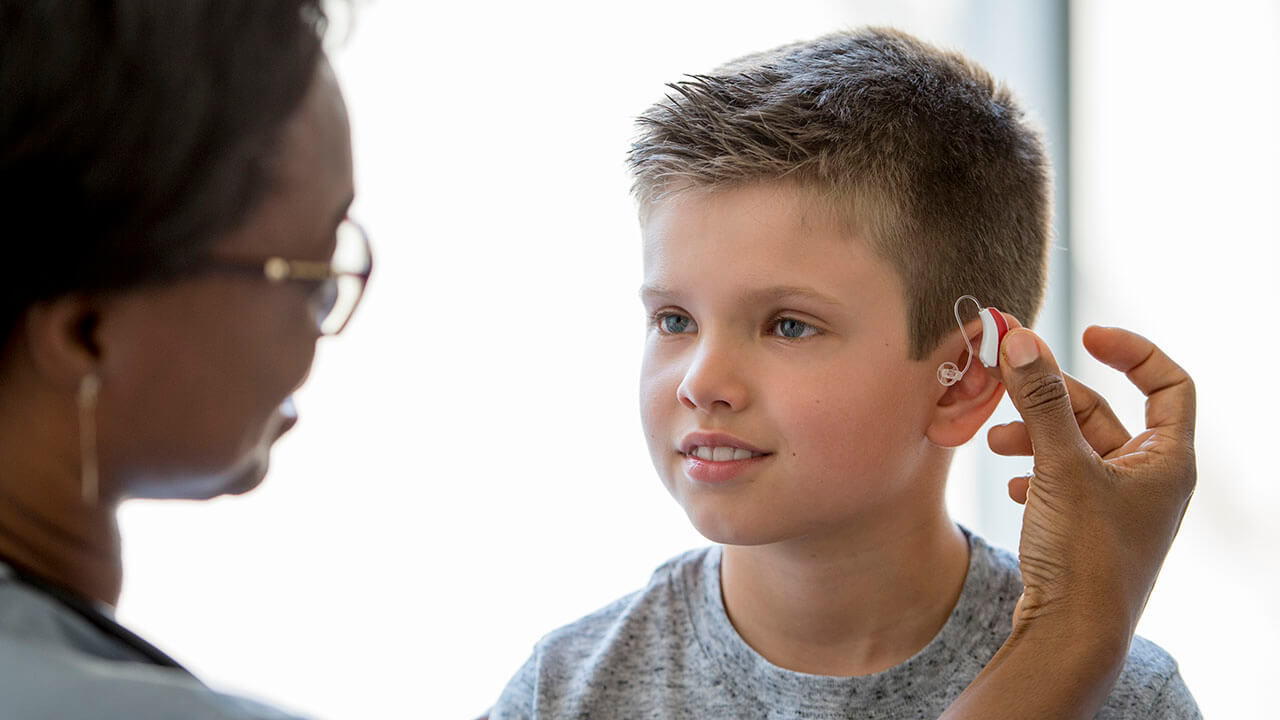

According to the Better Hearing Institute, three out of four hearing aid users report improvements in their quality of life due to wearing hearing aids. Additional studies show many benefits to wearing hearing aids, even for those with mild hearing loss, including:
Your audiologist will work with you to determine which style best fits your hearing needs. Remember to include your family and friends in your decision. Communication is a group effort and benefits all.
- Improve job performance
- Increase earning potential
- Enhance communication skills
- Improve professional and interpersonal relationships
- Ability to stave off depression
Open ear (OE)
Hearing aids do not restore hearing to "normal" - they maximize your hearing ability to improve speech understanding and listening-in noise. Deciding which hearing aid is right for you is a complex and personal decision. Below is a list of basic styles of hearing aids. They come in a variety of styles, sizes and technology levels. Style and size is determined by the degree of your hearing loss, the shape and size of your ear, your ability to manipulate small parts, and your personal preference.Completely-in the-canal (CIC)
The smallest of the hearing aid fits deeply into the ear and can hardly be seen when worn. It uses a small battery which will need to be changed more often due to its size. The smaller hearing aid requires better dexterity in order to manipulate both battery changing and overall maintenance such as cleaning.In-the-canal (ITC)
The plastic case extends slightly beyond the ear canal. This added size can provide more room for added options like a volume control or larger battery.In-the-ear (ITE)
The plastic case extends into the ear bowl and can be seen more easily. It has a larger size battery which will not have to be changed as often. Because of its larger size, the hearing aid generally has more manual controls.Behind-the-ear (BTE)
This hearing aid fits behind your ear and sends sound into your ear canal through a plastic tube and ear mold. Since the electrical components are housed behind the ear, this hearing aid is less affected by ear wax and moisture from the ear canal. This style often can provide more power if needed and several adjustment options such as hooking up to an FM system for children in the school system.Open ear (OE)
These are thin-tube hearing aids. This behind-the-ear hearing aid sends sound to your ear canal through a thinner plastic tube with an attached ear tip or ear mold. It has great cosmetic appeal while being durable and reliable. In addition, OE hearing aids help individuals with good low-frequency hearing to experience a more pleasing sound quality when hearing their own voices.Receiver-in-the-canal (RIC)
This behind-the-ear hearing aid has combined the advantages of an in-the-ear style with that of a behind-the-ear hearing aid. This style places the receiver (speaker) of the hearing aid inside your ear canal with the rest of the hearing aid sitting on top of the ear.Your audiologist will work with you to determine which style best fits your hearing needs. Remember to include your family and friends in your decision. Communication is a group effort and benefits all.
Brands available at Prevea Health
- Cochlear America cochlear implants
- GN Resound
- MED-EL: Programming services for cochlear implant recipients
- Oticon
- Phonak
- Signia
- Starkey
- Unitron
- Widex


.jpg?width=1280&height=720&ext=.jpg)